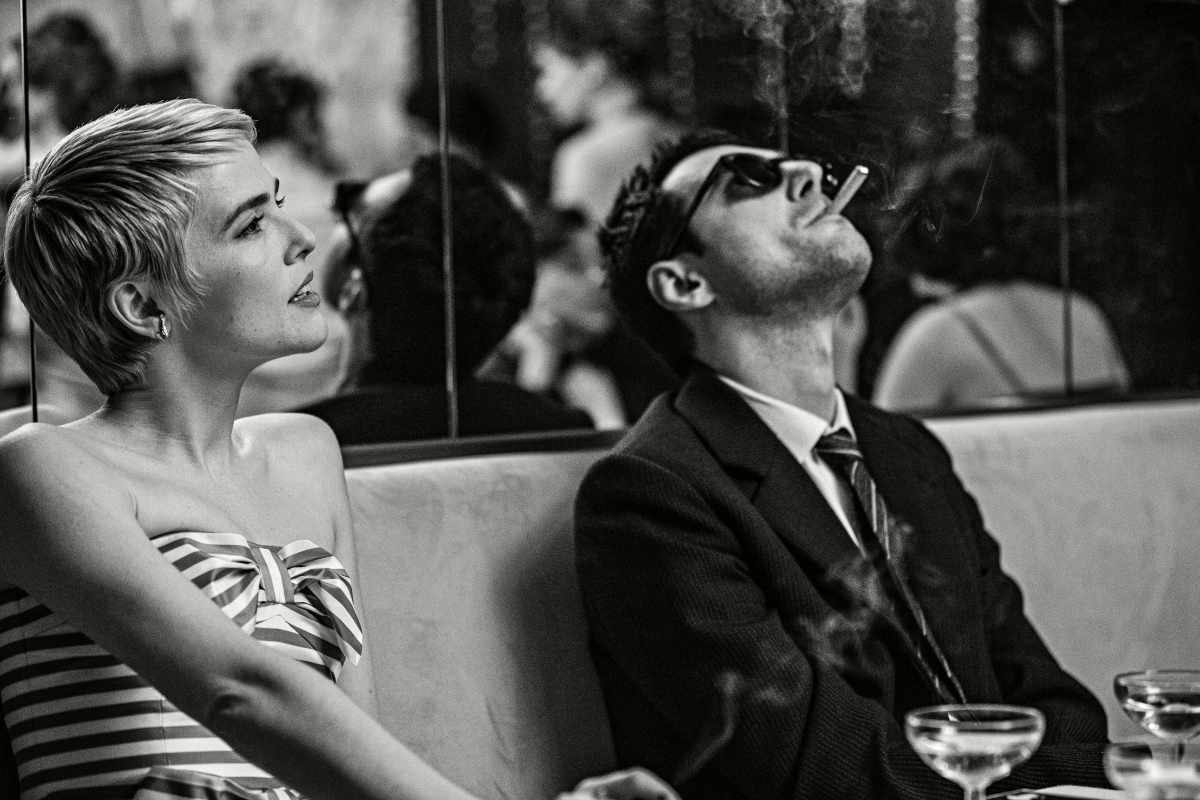Richard Linklater | 1hr 46min

Before Nouvelle Vague, the only times that Richard Linklater had stepped outside the borders of Americana was for his tenderly romantic Before trilogy, where the streets of Austria, France, and Greece hosted Jesse and Celine’s wandering conversations. As such, his return to Europe’s artistic cradle plays like a love letter to its past masters, channelling their irreverent spirit by way of recounting their story. More specifically, it is Jean-Luc Godard who draws his interest here – among the last of the French New Wave auteurs to direct a film, yet also arguably the most infamous, throwing caution to the wind as he sought to liberate cinema from its staid traditions. There was to be no rigid screenplay or structured schedules on the set of his debut, Breathless. In their place, this production ran on the impassioned, spontaneous thrill of raw creation.
Working as an outspoken critic for magazine Cahiers du Cinéma, the Godard of Nouvelle Vague is not one to mince words when it comes to his honest views on art. “Your film is a load of shit,” he remarks to producer Georges de Beauregard, whose wry tolerance for Godard’s bluntness nevertheless leads him to bankroll his half-formed concept. Still, when Godard’s capricious demands and improvisations verge on chaos, even Beauregard’s patience hits its limit. Every day of shooting is governed by little more than the director’s whims, brazenly flouting his crew’s painstaking logistics and demands for consistency. “Reality is not continuity,” Godard proclaims with defiant conviction, emphatically embodying the maverick spirit which set cinematic convention aflame in mid-century Paris.
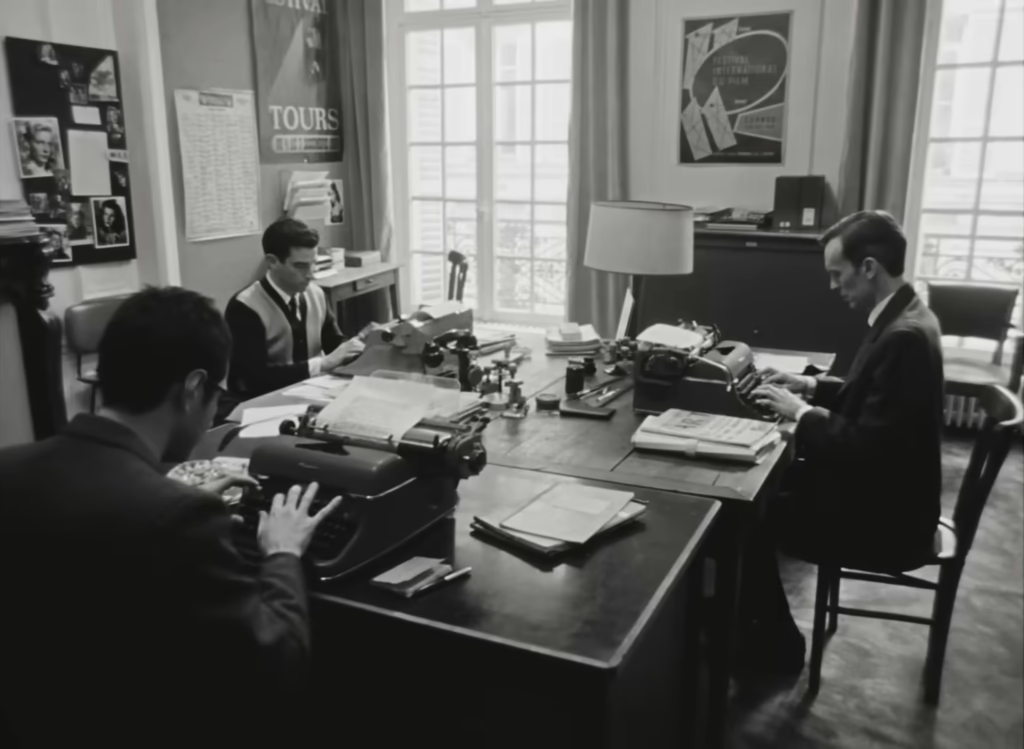
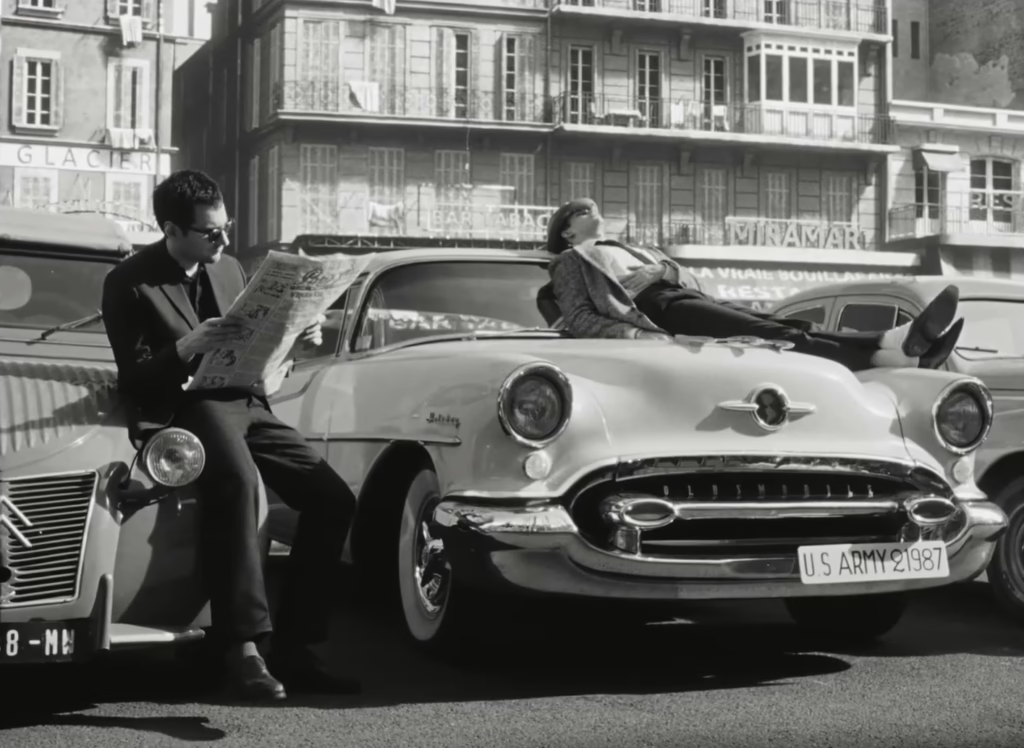
Hangout films have always been Linklater’s specialty, and here he not only continues to make otherwise insufferable personalities somewhat tolerable, but often even charming. While detractors like Beauregard rail against Godard’s anarchic methods, we find ourselves drawn to those who trust his spontaneous sparks of inspiration, including actor Jean-Paul Belmondo and cinematographer Raoul Coutard. “That’s all for today. I’m out of ideas,” the French auteur abruptly announces after a couple hours of shooting one day, letting his instincts guide the process rather than vice versa, while another morning he calls a wrap the moment he arrives on set.
No one is quite sure whether Breathless’ story will end with the wannabe gangster getting the girl or dying, but that’s not exactly the point anyway. If art is the purest expression of human nature, then it can’t be restricted by the illusion of perfection, Godard believes. According to his ethos, cinema is a search for “the instantaneous and the unexpected,” morphing with the unpredictable rhythms of everyday life and reflecting our messiest contradictions.
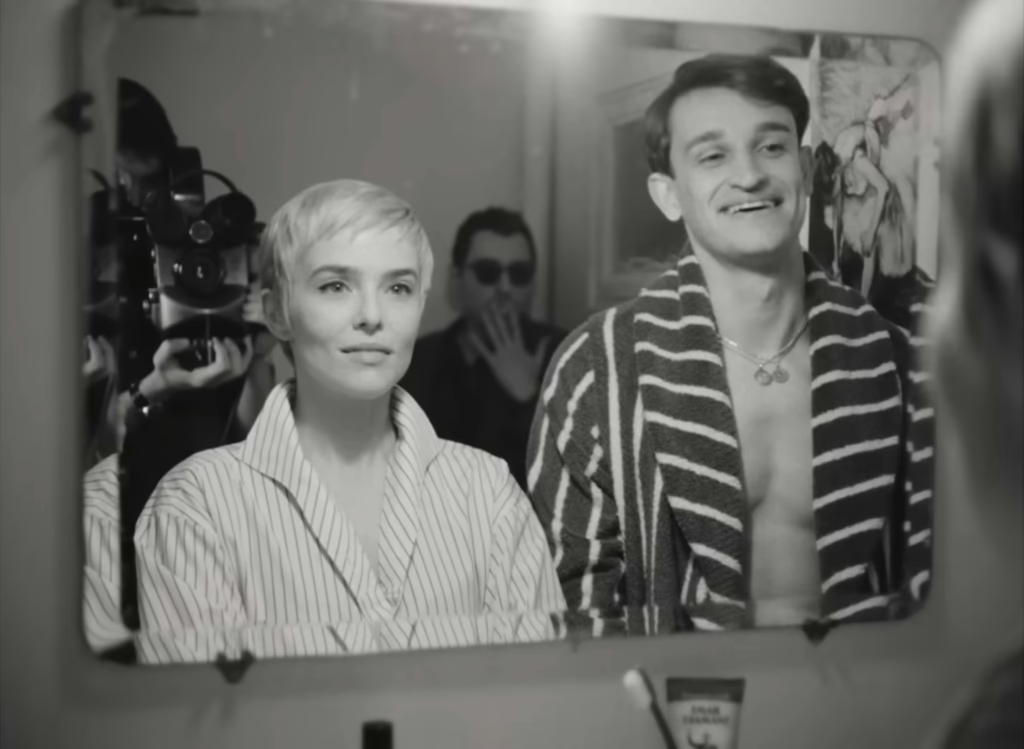

Indeed, Linklater’s appreciation for such freewheeling aspirations is evident in Nouvelle Vague, authentically emulating Breathless’ rough visual style through its grainy 35mm film stock, black-and-white cinematography, and cigarette burns. The location shooting is where this aesthetic truly flourishes though, trailing characters through the metro stations, parks, and cafés of Paris with handheld cameras, and vividly evoking the era in the gleaming vintage cars that line the Champs-Élysées. The name tags which introduce famous figures of the French New Wave against posed tableaux add a formal, self-aware touch too, nodding to everyone from Agnès Varda to Claude Chabrol, yet this is ultimately the extent of Linklater’s meta flourishes. As it is, the lack of any grand, formal experimentation in Nouvelle Vague leaves it far from the revolutionary energy of Breathless, with not so much as a jump cut to jolt the viewer out of narrative complacency.
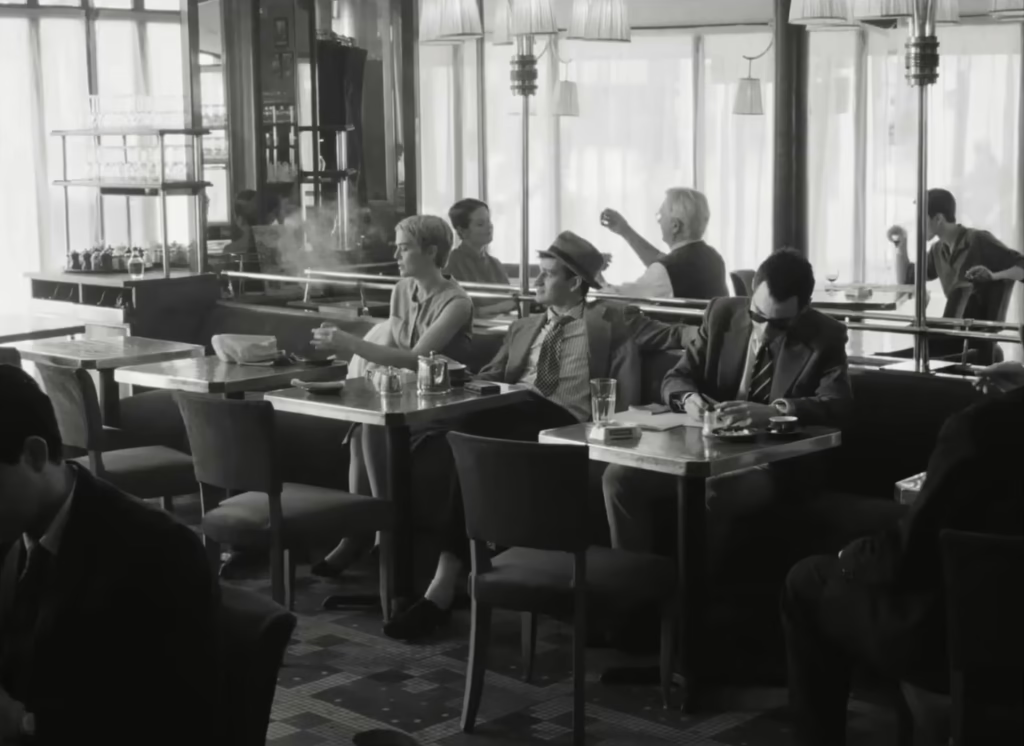
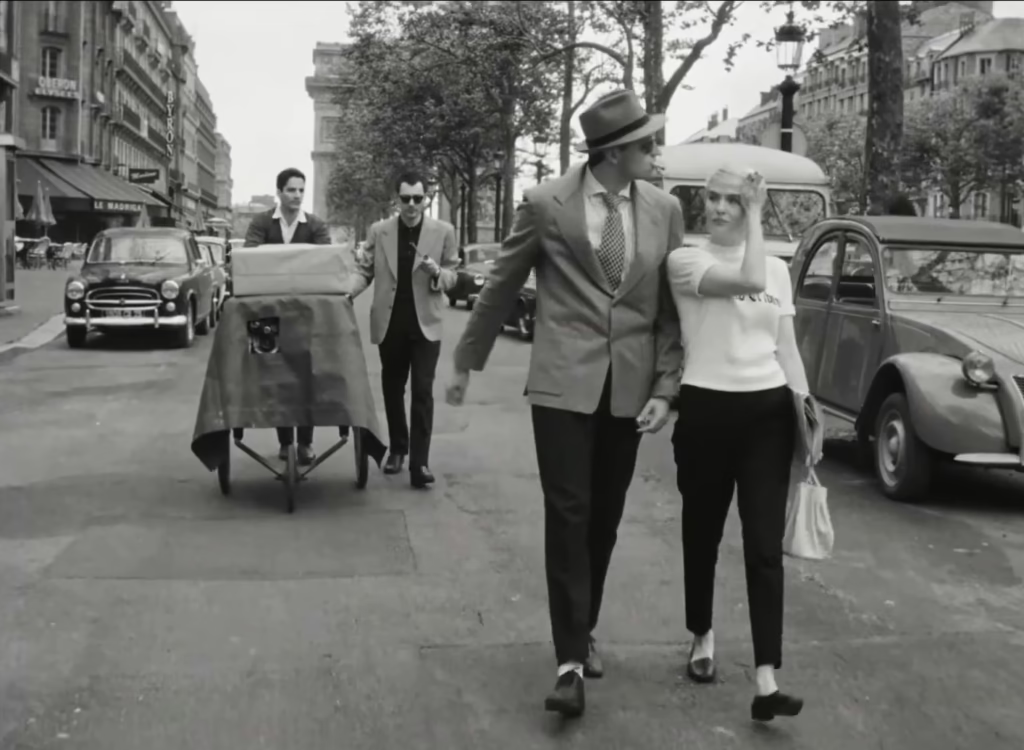
At the very least, Linklater’s homage stands firm in its study of cinematic subversion, drawing a wry comedy from Godard’s offbeat resourcefulness. Rather than seeking public filming permits and paying extras, he modifies a mail cart for Coutard to hide inside with his camera, and even manages to warm his contentious relationship with exasperated lead actress Jean Seberg into begrudging respect. Between Guillaume Marbeck’s cool, aloof detachment and Zoey Deutch’s stylish poise as the American star, Linklater cultivates an unorthodox chemistry among his actors, tentatively balancing the friction of Godard’s artistic ego with the warmth and wit that inevitably breaks through its brittle façade.
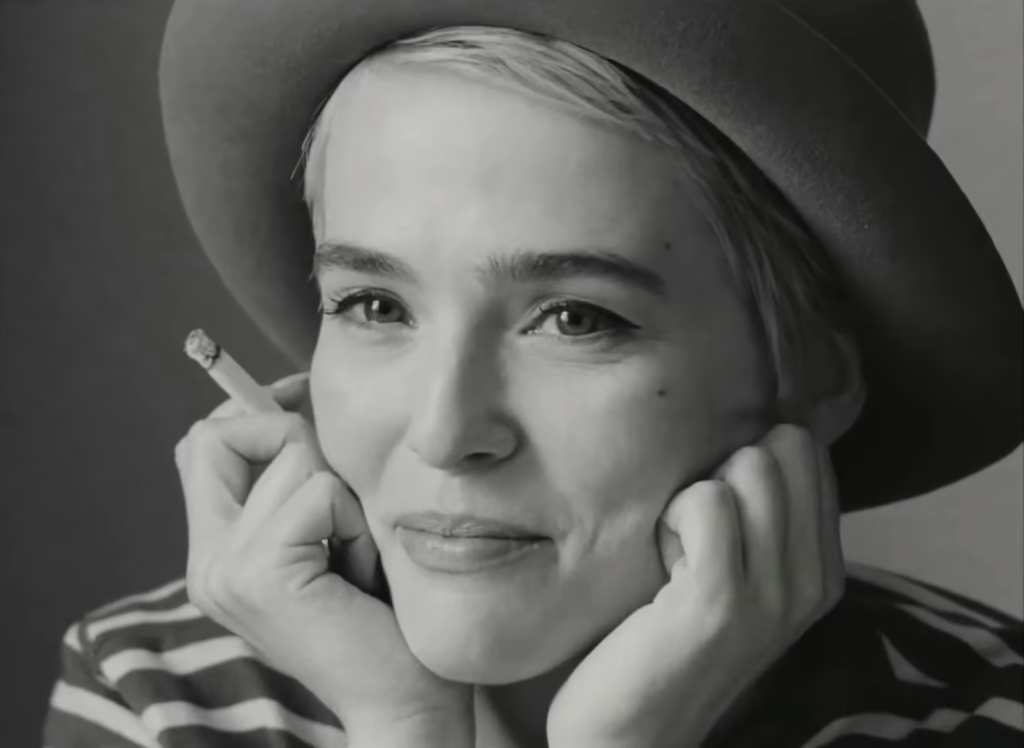
In the editing room too, Godard’s rebellion reaches its purest form. “The film is impatient to move forward,” he proclaims, demanding that shots be sliced mid-action and collide in jagged bursts. If the people loved Méliès and Eisenstein’s jump cuts, then they will like his, he decides, effectively undermining decades of cinematic grammar with irreverent abandon.
Where Godard’s sunglasses once reflected the flickering, final frames of François Truffaut’s film The 400 Blows, they now catch the shimmer of his own magnificent debut, bringing Nouvelle Vague full circle – not that his friends see the genius in his groundbreaking work. For as many who weren’t ready for the shockwaves of Breathless, countless future filmmakers found liberation in its ruptures, continuing to reshape the visual and narrative architecture they had long accepted. Through his ode to artistic upheaval as well, Linklater reaffirms his place among those who champion such earnest, instinctive storytelling, sustaining those restless currents which continue to push the boundaries of human creation.
Nouvelle Vague is currently streaming on Netflix.


